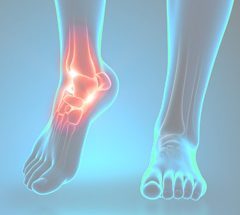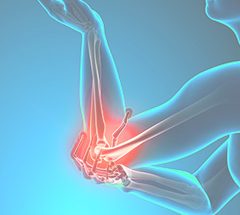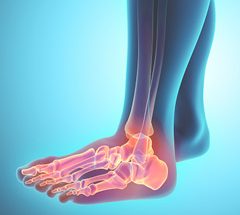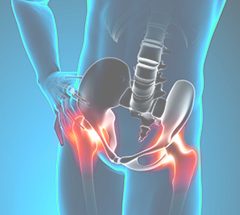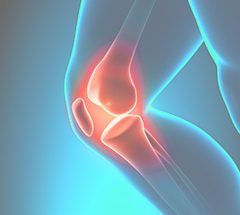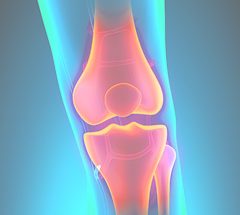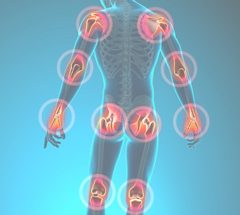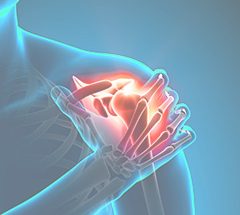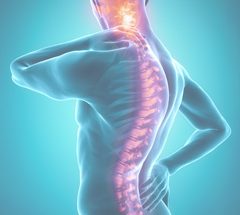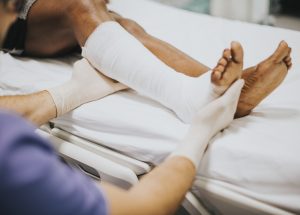
It’s time to break the age barrier on joint health, because osteoarthritis (OA) isn’t reserved for the golden years. And that’s not great news.
In the dynamic realm of health, young adults can also find themselves face to face with OA, which the Centers for Disease Control and Prevention identifies as the most common form of arthritis. When you hear “wear and tear” arthritis or “degenerative bone disease,” that’s OA, and it’s caused by the breakdown of cartilage within a joint, which in turn causes the underlying bone to change.
Bottom line: OA is commonly found in the hands, hips, knees, back, and neck—but can truly affect any joint—and leaves you both in pain and unable to lead the life you want to live. Oof.
Here at ProOrtho, we’ve got you covered. Buckle up as we unravel the mysteries of this disease, explore its causes, identify early warning signs, and delve into tactics for prevention. That’s right, from risk factors to a ray of hope in orthopedic surgery, it’s time to arm yourself with the knowledge you need to navigate OA and reclaim control over your joint health — because OA doesn’t discriminate based on age, and neither does our commitment to helping you prevent, or get through, this disease.
What’s In a Name: Different Types of Arthritis
OA may be the most common, but even the young folks can be affected by the likes of:
- Psoriatic Arthritis: Inflammatory arthritis associated with psoriasis, affecting joints and skin, causing pain, stiffness, and joint damage.
- Infectious Arthritis: Joint inflammation caused by an infection, leading to pain, swelling, and restricted movement.
- Gout: A form of arthritis characterized by sudden, severe joint pain, usually in the big toe, due to the buildup of uric acid crystals.
- Rheumatoid Arthritis: A chronic autoimmune disorder causing joint inflammation, pain, and damage, often affecting multiple joints and leading to deformities if untreated.
- Juvenile Arthritis: A group of autoimmune disorders causing joint inflammation in children under 16, leading to pain, swelling, and stiffness.
The Culprits Behind Osteoarthritis
Culturally speaking, we tend to classify OA as a condition of the elderly, but OA is increasingly making its presence known among young adults in their 20s and 30s. This degenerative joint disease primarily affects cartilage, the protective tissue that cushions the ends of bones, causing pain, stiffness, and reduced mobility. How’s that happen? Aging is the most common factor, but other contributing factors include:
- past and present joint injuries from sports or accidents;
- obesity;
- genetic predispositions;
- repetitive stress on joints;
- inadequate physical activity/sedentary lifestyle;
- poor diet/nutrient deficiencies.
Spot Those Warning Signs While You’re Still Young
Identifying symptoms of osteoarthritis in your 20s and 30s can be challenging as they often overlap with the strains of a busy, active lifestyle. Look out for persistent joint pain, prolonged stiffness after inactivity, a noticeable reduction in joint flexibility, and overall instability (particularly in the knee). Some other unwelcome joint-focused indicators of OA include hearing “popping” or “clicking” sound when moving the joint, experiencing weakness in the surrounding muscles, and feeling/seeing swelling in the area around the joint.
If you find yourself grappling with these issues, it’s crucial to consult with your primary care physician for a proper diagnosis.
Fortifying Your Joints: Tactics to Prevent Osteoarthritis
Preventing osteoarthritis in involves adopting a proactive approach to joint health. Regular exercise, especially activities that promote joint flexibility and strength, can act as a shield against OA. Focus on:
- Flexibility (a.k.a. Range of Motion) exercises like hip and lower back stretches.
- Strength training (a.k.a. resistance training) exercises…these can range from hip extensions, planks, and bridges to actual weight training. If you already know what you’re doing that’s great, but if you have questions (especially around pushing the weights around), it’s worth consulting both your physician and a personal trainer. Your safety—and wellness—is worth it!
- Low impact aerobic exercise—cycling, walking, swimming, or an elliptical trainer are perfect to keep your heartrate up and cardiovascular system flowing without impacting your joints.
Maintaining a healthy weight also reduces stress on joints, while a nutrient-rich diet provides essential building blocks for strong cartilage. Avoiding excessive joint strain and incorporating joint-friendly supplements like glucosamine and chondroitin can further fortify your joints. Prior to starting any supplement regimen, though, we recommend checking with a physician to make sure they are appropriate for you to take, especially if there is any chance of an interaction with medications you may be taking.
Easing the Burden: Alleviating Osteoarthritis Pain
Pain management is a critical aspect of living with osteoarthritis. Non-pharmacological approaches, including physical therapy and occupational therapy, can enhance joint function and reduce pain. Over-the-counter pain relievers, such as acetaminophen or nonsteroidal anti-inflammatory drugs (NSAIDs), may be recommended by healthcare professionals. Finally (and perhaps most importantly), lifestyle modifications—specifically implementing joint-friendly habits that support you 24/7—will contribute to a more comfortable life despite osteoarthritis.
Like a Little Ray of Light: Orthopedic Surgery as a Treatment Option
If you ever find yourself grappling with osteoarthritis, consider orthopedic surgery as a potent solution. Young adults facing advanced stages of OA may find relief through surgical interventions such as joint replacements or arthroscopy. These procedures aim to repair damaged joints, alleviate pain, and restore mobility. Consulting with an orthopedic specialist can help determine the most suitable surgical approach based on individual circumstances. Reach out to us here at ProOrtho today and we’ll discuss how our orthopedic services may be right for you.
We’re Here to Help
Certainly, osteoarthritis in your 20s and 30s may seem like an unexpected hurdle for your healthy lifestyle, but understanding its nuances and taking proactive steps in prevention and treatment can positively impact your joint health. From identifying symptoms early on to adopting preventative measures and exploring effective treatment options, the journey through osteoarthritis is navigable with knowledge and proactive healthcare choices.
Here at ProOrtho, we want to make sure you understand all your choices. If orthopedic surgery is one of them, give us a call at 425.823.4000. Our doctors offer surgical options with the most advanced technologies available, so you can get back to the life you want to live.

